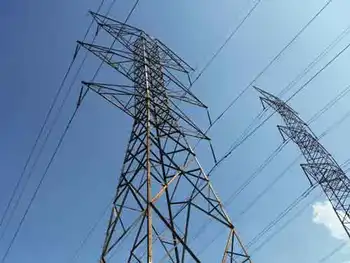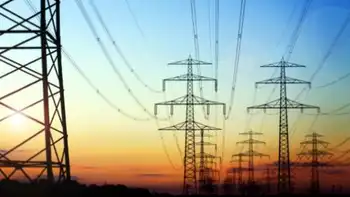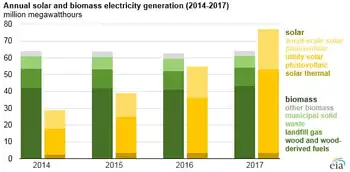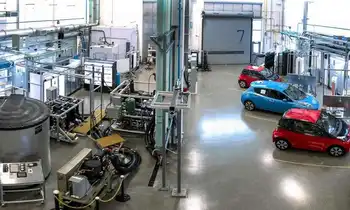Solar energy takes off as cost declines
CHICAGO, ILLINOIS - At a former industrial site on Chicago's South Side, more than 32,000 solar panels slowly tilt every few minutes, following the sun as it moves across the sky.
Operated by Exelon Corp., the 40-acre site is the nation's largest urban solar plant, generating 10 megawatts of clean power and hope for an industry that has long waited for its moment in the sun.
"We have been frustrated over the years that solar has not become more mainstream," said Kevin Lynch, who trains electricians to install solar panels for the International Brotherhood of Electrical Workers. "We understand it's still a relatively expensive technology, but the cost is much less than it was a few years ago."
Indeed, the biggest obstacle to the growth of solar energy-its cost-has started to decline. The price of photovoltaic solar panels dropped more than 40 per cent last year due to a glut in global supply, according to the Solar Energy Industries Association.
The drop in price is driving renewed interest in solar energy, said Howard Learner, executive director of the Environmental Law and Policy Center.
Last month, Illinois lawmakers passed legislation that will double the state's solar power supply each year and create an estimated 5,000 "green" jobs by 2014. Meanwhile, at least three solar developers have plans to build solar projects of 10 to 20 megawatts in Illinois, Learner said.
To be sure, Illinois is not quite the solar-powered mecca of California or Florida. But the potential is there: The sun in Illinois is more intense than in Japan or Germany, the world's two largest solar markets.
"Illinois has the opportunity to be a very significant solar energy leader between the two coasts," Learner said.
Nationwide, there are more than 22,000 megawatts of large-scale solar projects under development, or enough to power 4.4 million homes. And government incentives are helping drive the industry. A 30 per cent manufacturing tax credit has resulted in the construction of 58 new facilities to produce solar energy equipment, according to Jared Blanton, a spokesman for the Solar Energy Industries Association.
In Illinois, unions are preparing for the anticipated demand. At an apprentice school in Alsip, Lynch trains about 200 electricians a year to work in the solar industry. His students are hoping to follow in the footsteps of Jim Amedeo, the site supervisor at Exelon's Chicago plant.
Amedeo, who once ran data centers for Internet and telephone companies, now spends his days checking the position and quality of solar panels to make sure they are absorbing maximum sunlight.
"I'm glad I got in at the beginning of a growth industry," said Amedeo, who works for SunPower Corp., which designed and operates the facility. "Solar is ready to take off here in the United States."
But the promise of "green" jobs should not be seen as a panacea for unemployment, Lynch said. Exelon's plant, for example, created about 200 jobs, but only during the six months of construction, he said.
"It certainly wasn't something that went on for years," Lynch said.
Still, solar proponents see hope for the future in Exelon's solar plant, which began operating in December.
To finance the $62 million project, Exelon took advantage of local real estate and federal tax incentives. The company hopes to recoup more costs by eventually selling solar renewable energy credits. For a company that has staked its future largely on nuclear reactors, the solar plant is a learning experience.
"We look forward to learning lessons on how this operates," Exelon spokesman Paul Elsberg said. "This is really our first foray into solar power."
The facility has generated a range of benefits for the local economy. The solar panels sit on metal poles created by Fabricating and Welding Corp., located less than a mile away. And the site itself, which sat abandoned for 30 years, is now back on the city's tax rolls.
The solar plant generates enough electricity to power about 1,500 homes and its clean power means less greenhouse gases are emitted, the equivalent of taking 2,500 cars off the road each year.
But with unemployment remaining high, new solar projects such as Exelon's are being measured as much for the jobs they create-even if only temporary-as the pollution they avoid.
"These were actual construction jobs, with decent wages, health insurance and pensions," Lynch said. "And there's going to be clean energy coming from that site for years and years to come."
Related News

Two-thirds of the U.S. is at risk of power outages this summer
WASHINGTON - The Department of Energy recently warned that two-thirds of the U.S. is at risk of losing power this summer. It’s an increasingly common refrain: Homeowners want to be less reliant on the aging power grid and don’t want to be at the mercy of electric utilities due to rising energy costs and dwindling faith in the power grid’s reliability.
And it makes sense. While the inflated price of eggs and butter made headlines earlier this year, electricity prices quietly increased at twice the rate of overall inflation in 2022, and homeowners have taken notice. In fact, according to Aurora…




